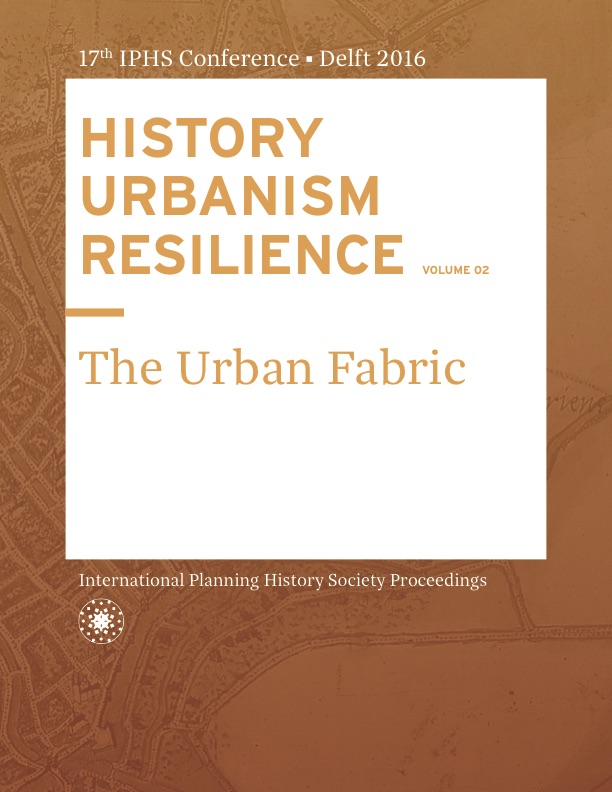Towards a sustainable plan for new tube houses in Vietnam
DOI:
https://doi.org/10.7480/iphs.2016.2.1237Abstract
In Vietnam, the history of cities can easily be seen through their urban patterns, landscapes and housing typologies. Most recently, the economic reform in 1986 has resulted in huge impact on the Vietnamese society. The rapid economic growth and privatisation of the market has resulted in the appearance and significant development of the “new tube house” which soon became the most dominant housing type in Vietnam. Hanoi, the capital city of Vietnam, has a long history and also is very rich in architectural styles and typologies which are reflected in its urban pattern. However, there is no actual clear boundary in urban scale as the new tube houses are scattered all over the city and they are adapted differently to the contexts. This paper aims to investigate how the traditional urban tube houses in Hanoi transformed into the new tube house and, on the other hand, present the results of a survey conducted in Vietnam on how these houses respond to the Vietnam local climate and perform in terms of energy consumption.References
Do T.M. & Sharma D., “Vietnam’s energy sector: A review of current energy policies and strategies”. Energy Policy 39 (2011) 5770-5777.
General Statistics Office of Vietnam (GSO). The 2009 Population and Housing Census of Viet Nam. (2010).
Gough, K.V & Tran, H.A., “Changing housing policy in Vietnam: Emerging inequalities in a residential area of Hanoi” Cities 26 (2009): 175 – 186.
Hoang H.P. & Nishimura Y., “Housing in Central Hanoi”. Habitat International 15 (1991) : 101-126.
International Energy Agency (IEA), 2012. Statistics extracted from IEA website at the address http://www.iea.org/statistics/statisticssearch/report/?year=2012&country=VIETNAM&product=Balances (accessed October 2015).
JICA, “Urban Development and Housing Sector in Viet Nam”. Japan Bank for International Cooperation (JBIC), 1999.
Luong, T.Q. “The difficulties and challenges of upgrading the old living quarters in Hanoi city”. International Conference on Sustainable Architectural Design and Urban Planning. Hanoi Architectural University, May 15-16, 2007, Hanoi, Vietnam
Ly T.P., Birkeland J. & Demirbilek N., “Towards sustainable housing for Vietnam”. Paper presented at the 4th International Conference on Sustainability Engineering and Science, NZSSES, Faculty of Engineering, the University of Auckland, New Zealand, 2010.
Ly T.P., “A critical regionalist approach for housing design in Vietnam: Socio-environmental organisation of living spaces in pre- and post- reform houses”. (PhD diss., Queensland University of Technology, 2012).
Ministry of Construction (MOC). QC 09:2013/BXD: National Technical Regulation of Energy efficiency buildings. (2013).
Nguyen A.T., “Sustainable housing in Vietnam: Climate responsive design strategies to optimize thermal comfort” (PhD diss., University of Leige, 2013).A
Parenteau R., Charbonneau F., Pham K.T., Nguyen B.D., Tran H., Hoang M.N., and Vu, T.H., “Impact of restoration in Hanoi’s French colonial quarter”. Cities 12 (1995) : 163-173.
To K., “Tube House and Neo Tube House in Hanoi: A comparative study on Identity and Typology”. Journal of Asian Architecture and Building Engineering (JAABE) 7 (2008): 255-262.
Tran Q.B., “Urban transformation process of the French quarter in Hanoi” (in Vietnamese). Ashui, April 12, 2012, accessed on March 20, 2016, http://ashui.com/mag/chuyenmuc/quy-hoach-do-thi/6633-qua-trinh-bien-doi-hinh-thai-do-thi-khu-pho-phap-o-ha-noi.html

